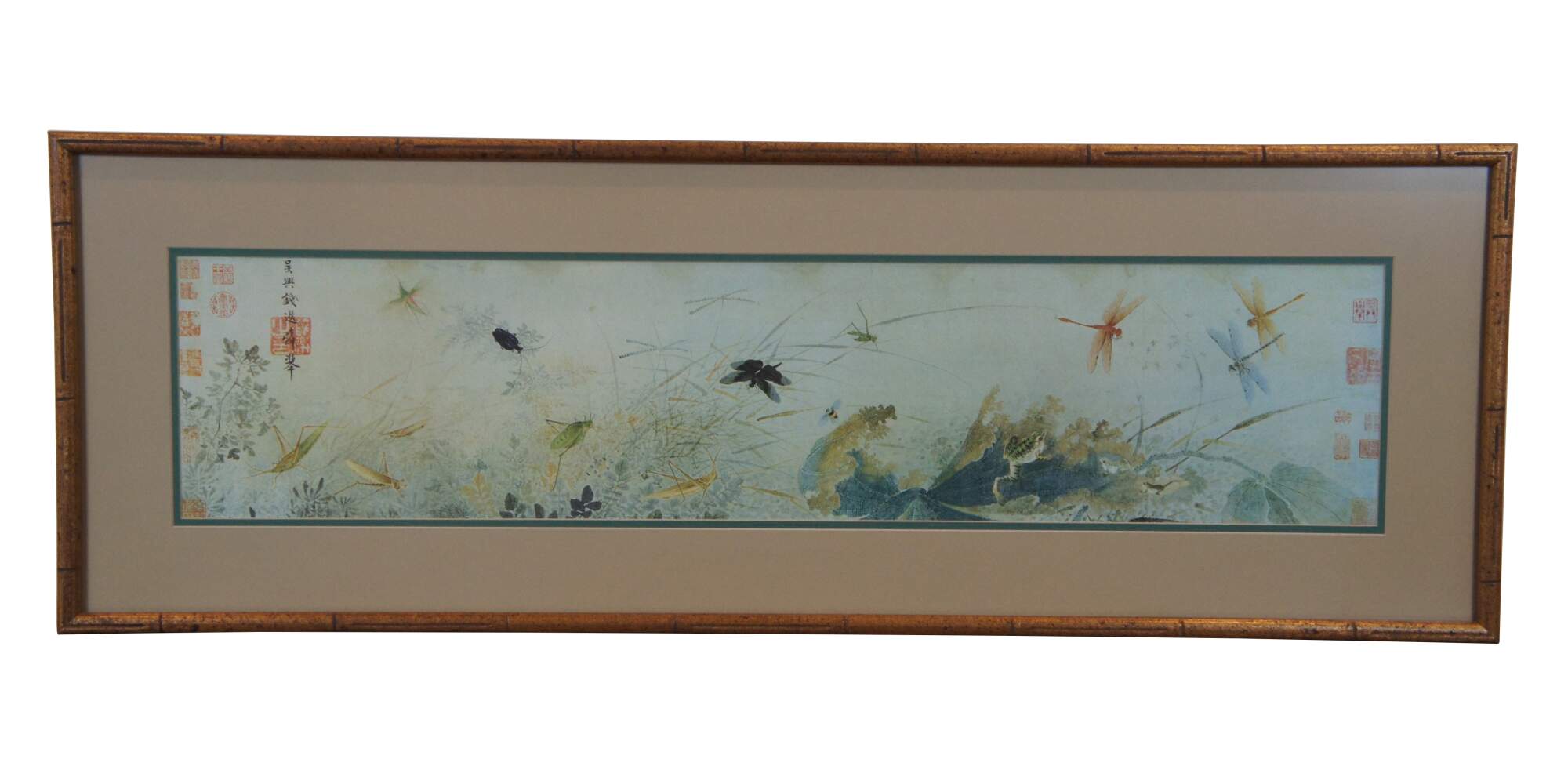
Shipping:
Free Shipping Included
Delivery:
Estimated 2-15 Business Days
Payments:
Credit Card, Check, Cash, PayPal, Apple Pay, Venmo
Returns:
30 Days 100% Money Back Guarantee, Buyer Pays Return Shipping
Description
Vintage Qian Xuan, Early Autumn, lithograph print in faux bamboo frame. Qian Xuan was one of the first scholar-painters to unite poetry, painting, and calligraphy within a single work.
The depiction of the most delicate forms of plant and animal life developed into a specialized form of painting in the 900s known as "bird and flower," which also includes paintings of "insects and grass.” Early Autumn is among the most well-known paintings of this tradition. While this painting bears the name of the great Chinese master of "bird and flower" painting, Qian Xuan (1235–c. 1305), scholars debate whether it was actually painted by Qian Xuan because the method of painting differs from his other known works. It is believed that this scene was painted in the early 1300's. At that time, so called "fur and feather" paintings were especially popular among the Mongol aristocracy. The scene of the waning days of summer with the decaying lotus leaf and dragonflies hovering over stagnant water was probably a veiled criticism of foreign rule. Following the painting is a melancholy poem by retired scholar Ke Jiusi dated 1342:
… A pool of lotus leaves sheds its robes;
The notes from a pair of frogs play their music;
Already you have wished to leave the worries of life And joined with the deep places of water and cloud make them your home.
It seems to reflect his yearning to rejoin the company of the previous emperor who had died mysteriously after Ke left court, a victim of a political struggle.
Qian Xuan (simplified Chinese: 钱选; traditional Chinese: 錢選; pinyin: Qián Xuǎn; Wade–Giles: Ch'ien Hsüan; 1235–1305), courtesy name Shun Ju (舜举), pseudonyms Yu Tan (玉潭, "Jade Pool"), Xi Lanweng (习嬾翁), and Zha Chuanweng (霅川翁), was a Chinese painter from Huzhou (湖州), the present day Wuxing District in Zhejiang.[1] He lived during the late Song dynasty and early Yuan dynasty.
Biography
Qian Xuan started as an aspiring scholar-official during the rule of the Southern Song (960–1279). However, he had difficulty climbing the ranks of officialdom. When the Mongol-founded Yuan Dynasty took over the southern regions of China in 1276, he effectively gave up on the idea of a career in civil administration. In 1286, his friend Zhao Mengfu found and accepted a position there, and so for a time it seemed he could as well. However, he refused on patriotic grounds, while he cited old age to avoid difficulties. He nevertheless was considered a Song loyalist.
His life after 1276 was devoted to painting, and he became noted as a "fur and feathers" painter. He was also adept at bird-and-flower painting, character painting, and landscape painting (shan shui).[1] He is known for landscapes that hinted at a longing for a return of native Chinese rule, such as in the work Home Again. He mixed Song realism with an archaic Tang style.
Condition
Very Good
Dimensions
42.5” x 0.75” x 14.75” / Sans Frame - 35.5” x 7.75” (Width x Depth x Height)